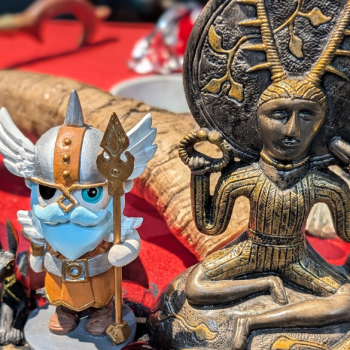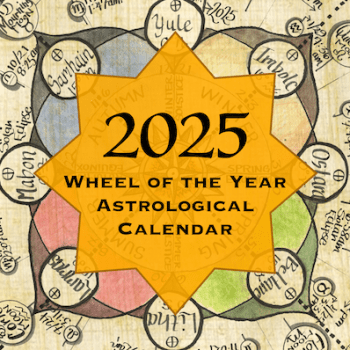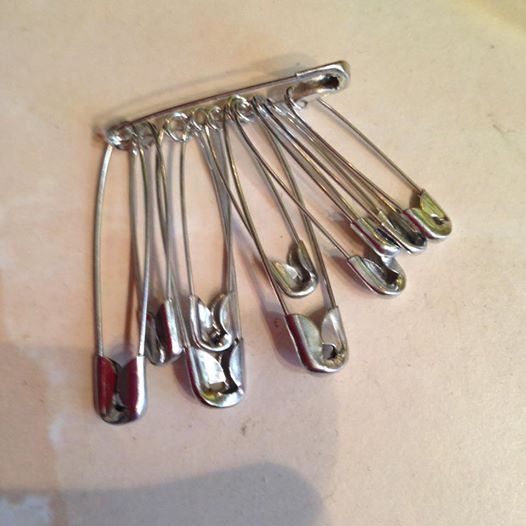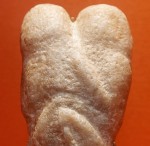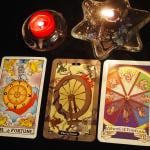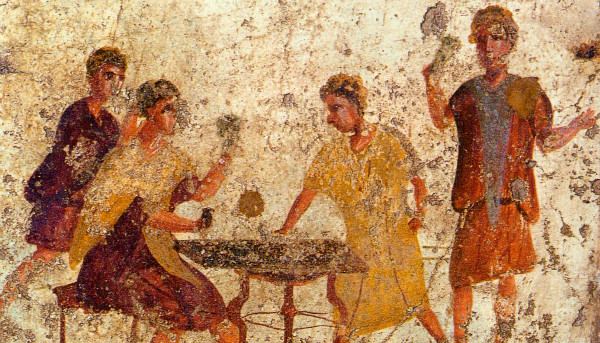
The winter solstice is the point in the year when the day is at its shortest. The sun rises at its furthest south, and rises in roughly the same place for three days, hence the name “solstice”, meaning “Sun stands still”.
When I was a kid, I was told that ancient pagans used to light bonfires on top of hills at the winter solstice because they feared that the sun would not return after the longest night. I don’t know if there is any truth in this idea, but I remember finding it thrilling.
The Anglo-Saxons called the festival Yule; the Old Norse word was jól.
The earliest references to Yule are by way of indigenous Germanic month names (Ærra Jéola (Before Yule) or Jiuli and Æftera Jéola (After Yule). It has been speculated that the word means “turning point”, but the etymology is unclear.
Yule customs and symbols
The exchange of gifts comes from the Roman festival of Saturnalia. People gave small gifts to their dearest friends, and larger gifts to others, as a sign of the inversion of normality that was part of the festival. The giving of gifts at Christmas was suppressed by the Catholic Church during the Middle Ages.
Bringing greenery into the house is also Roman in origin (Stations of the Sun, Ronald Hutton).
The origins of the Yule log are lost in the mists of time, but it probably dates back to ancient Germanic paganism.
Carolling may originally have been a round dance with singing, but the first specifically Christmas hymns for Christians appeared in fourth century Rome.
Wassailing, on the other hand, is much more ancient, and very likely to have pagan origins.
Feasting at Yuletide is definitely Pagan, and was actually discouraged by several Christian traditions.
A full list of Yule customs, and an explanation of their origins, can be found in the excellent Stations of the Sun, by Ronald Hutton.
The idea of the birth of a child of light at the winter solstice is found in several mythologies – Mithras, Christ, Horus, Osiris, Attis, and Dionysus are all born at the winter solstice. The Romans referred to 25th December as Dies Natalis Sol Invictus (the birthday of the unconquered Sun).
The inner meaning of Yule
Saturn was syncretised with the Greek god Chronos, god of time and old age. Hence Saturnalia represents the old year, and the birth of the new sun god at the solstice represents the birth of the new year. That is why the old year is often depicted as an old man, and the new year as a baby.
For Pagans, the whole year is a cycle, and the movements of the Earth around the Sun, and the resulting changes in temperature and day length and vegetation (in short, the seasons) are a core part of Pagan festivals.
At Autumn Equinox, we begin the descent into winter. At Samhain, we meet the ancestors and the beloved dead. At Yule, the furthest point in the descent of the Sun, we begin to emerge from the creative and introspective phase of winter, and start thinking about the first stirrings of Spring. The sun represents the core aspect of the personality in many esoteric symbol-systems, and so its descent into the underworld represents a journey into our own subconscious, our own depths, to bring up fertile material to feed a time of creativity. Of course we know that the Sun doesn’t really descend into the underworld, but in many mythologies, that is where the sun god goes.
Yule is also a time for enjoyment; the harvest is over and done, there is little work to do in the dark time of the year, so it is time to feast, sing, dance, make merry, and kindle plenty of lights (to make up for the lack of sunshine, and to remind the sun that we would like it to start rising further north again!)
UPDATE: Excellent comment from P Sufenas Virius Lupus with corrections to the history of Roman solstice celebrations.




